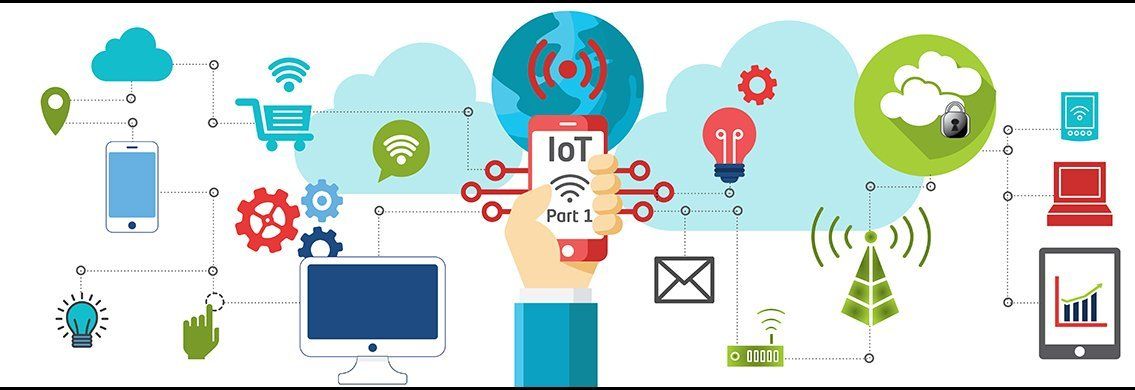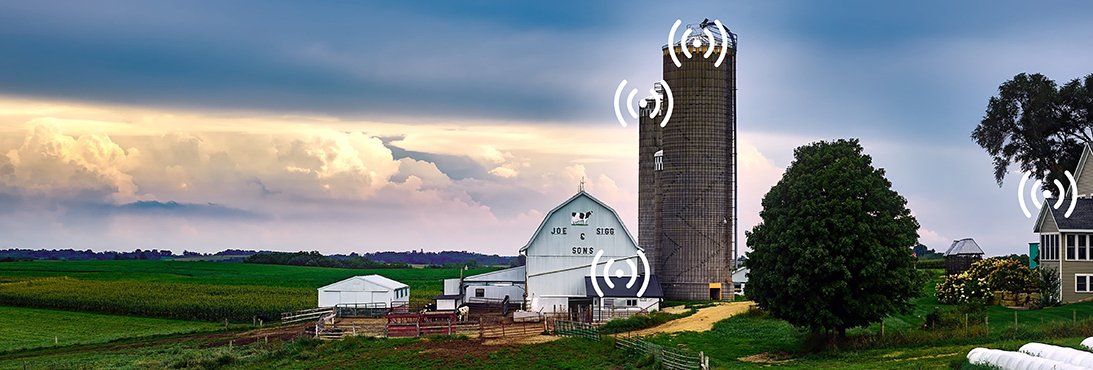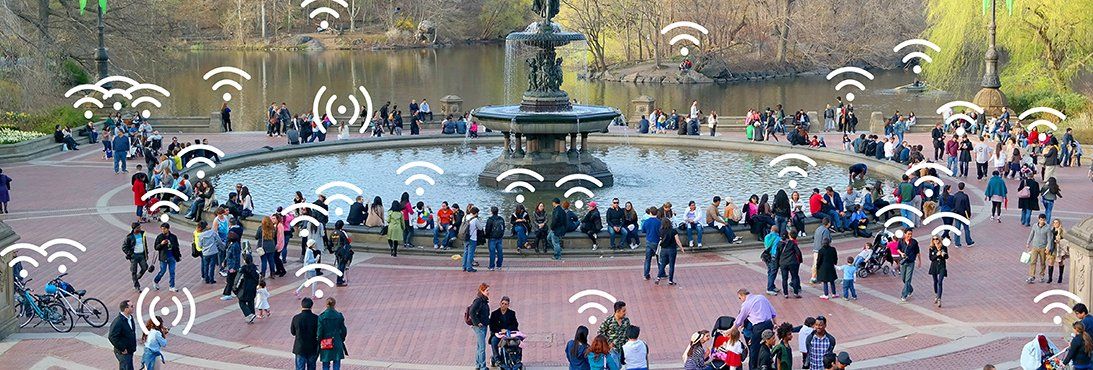Beta Solutions Blog
20 Things to Consider When Planning an IoT Solution - Part 1
Date: Nov 15, 2018
Author: Aaron Fulton, Systems Developer
Part 1:
You have heard of IoT and can see the benefit of sensors and data collection, but don't know where to start... You are not alone, many entrepreneurs feel this way, so this post is part 1 of a 2 part Blog series on what to consider when planning an Internet of Things (IoT) solution.
IoT is a complex subject which crosses many disciplines ranging from embedded electronics through to communications, cloud infrastructure, and software design. Architecting an IoT solution is a multifaceted business, there are many things to consider. For most organisations, working with companies who have IoT experience is critical to architecting and implementing a solution which works on all levels. IoT crosses 4 key domains: Devices, Communications, Cloud/Server infrastructure, and Applications.
In this Blog (Part 1) we will look at higher-level points to consider.
1. What are the Benefits
It may seem like an obvious question to ask, but the most important thing about planning an IoT project is to clearly understand the benefits and how they can impact/profit your business.Benefits can take many forms:
- A common benefit could be making better decisions through the use of data. Sometimes important decisions have historically been made based on intuition, gut feel, or forecast from historical trends. With the inability to collect real-time data, this was the best that could be achieved. With IoT technologies this changes as real-time data becomes available. Decisions can be made based on measurements rather than hunches and as a result will be higher quality. More data enables better long-term planning as well.
- Quality of service is another common benefit of IoT, particularly in service industries. Consider a commercial distribution system which needs to proactively keep their customers from running out of products. This is especially difficult if the customer consumption rate is variable. An IoT solution can be used to monitor each customer's inventory in real time, allowing for the supplier to service the customer much more effectively.
- Efficiency is a third major benefit. Getting real-time information means that systems can be optimised, which leads to increased efficiency.
- Sometimes the data can be on-sold to partners. From a financial perspective, this can certainly be a benefit!
The internet is also full of IoT solutions to problems that don't exist. Sometimes technology can look enticing, but without clearly understanding the benefit the technology brings, the solution could be a waste of money. For instance, do you really need an internet-enabled toaster?
2. Data Ownership & Sovereignty
Data is a huge asset in today's digital economy. Who owns IoT data? This might sound like a straightforward question if you are gathering data for yourself about yourself, but there are many scenarios where this gets more complicated. Consider a company which supplies grain to a farm. The supplier installs a monitoring device on a grain silo to measure the volume and schedule deliveries. The data set is as much about the farm as it is about grain logistics. Does the data "belong" to the grain supplier or the farmer? Or is it shared?
It is important to work out the policies around who owns data, what is shared, and what each party is allowed to do with the data.
The other dimension to data sovereignty is by which laws it is governed. Data kept off-shore is subject to the laws of the country in which it is kept. For example, there are penalties in some countries for significant data breaches, or the data might be subject to being accessible to local law enforcement if it is deemed appropriate (watch out for the NSA). Services which European citizens access need to comply with the EU General Data Protection Regulation (GDPR) regulations.
Once sorted out, data ownership & sovereignty can be spelt out in terms and conditions documents or other agreements, but it deserves some serious consideration.
3. How Will the Data be Analysed?
OK, so you've got some IoT data streaming in. Now what? Data is really powerful if used correctly. It is really easy to gather data but is a much harder proposition to extract out the maximal amount of information from it. Some data is designed to be used for real-time monitoring while other data is put into a data lake for later analysis. There are many many ways of slicing and dicing data. Consulting a data science expert who understands the range of tools and techniques is often a useful exercise.
There is often great insight to be had from cross-correlating different data sets and using the information for predictive and forecasting purposes. There is a famous example of how the Target stores very successfully correlated purchases across 25 products to estimate a pregnant woman's due date(1).
The use of neural networks (AI) or machine learning techniques has become much more popular in recent years, as the field has matured and the tools much more powerful and models much better.
4. Visualisation of the Data
Being able to visualise the data is another really important aspect of an Internet of Things solution. Row upon row of raw data might be interesting to a computer, but is not the optimal way to present data to a human. Summarising and displaying data in some kind of graphical form is much more useful.
Visualisation is important for:
- Finding trends in data.
- Finding anomalies in data (or points of interest).
- Seeing the data in context.
5. Criticality
Most systems are non-critical. But some are. Critical systems require special attention when it comes to design. With non-critical systems, it doesn't matter too much if there is a failure or fault. A failure is more of an annoyance rather than anything catastrophic. However, with critical systems, it is a different story.
There are four types of criticality:
- Safety Critical - Where failure or malfunction may result in death or serious injury to people. Examples include fuses, fire alarms, emergency systems.
- Mission Critical - Where failure or malfunction will cause cascading problems across the entire business or affect many businesses or organisations. Examples include aeroplane navigational systems, banking systems, and the power grid.
- Security Critical - Where failure or malfunction will mean private, personal or classified information is breached. Examples include systems that provide encryption and transmit personal or classified information.
- Business Critical - Where failure or malfunction will cause some parts of the business to cease functioning but will not cause a cascading effect. Examples include key bits of software used by specific departments.
If the IoT solution is in any way critical, special care must be taken in the design. Risk planning (through the likes of a Failure Mode and Effects Analysis (FMEA)) and a lot more engineering will be required to make sure that the solution is sufficiently robust. Calling on experts with experience in designing critical systems and conducting Risk Assessments and Failure Mode and Effects Analysis is highly recommended.
6. Security
Security is always a significant consideration in this day and age. With IoT solutions there are two key types of security to consider: Network security and Physical security.
Any decent enterprise IoT solution will have security baked into the solution, this is not the case for every provider though. Sometimes security gets forgotten. There have been examples of internet-connected security cameras being compromised and being conscripted into a bot-net attack, or cars being controlled remotely.
Luckily many IoT solutions are inherently much more secure in terms of their transmission, with all data being force-encrypted, also much of the communications happening on private networks. Wi-fi and internet-connected devices are most at risk of security vulnerabilities. Low-power IoT devices have very limited capabilities and spend most of their time asleep which greatly decreases the "attack surface" for anything malicious.
Physical security also needs to be considered. IoT devices and sensors sometimes need to be in locations which are easy to access. This opens up the possibility of the sensors being tampered with, especially those in public places.
7. Total Cost of Ownership
Three of the defining characteristics of the Internet of Things are the sheer number of devices, the length of time they are deployed for, the low total cost of ownership. The whole life cycle of the product must be considered however: procurement, installation, maintenance, and removal. If thousands are being deployed this cost can mount up to a significant amount of money.
When working out the total cost of ownership of IoT devices it is important to take into account:
- What it will cost to install the devices
- How often the devices will require maintenance (changing out batteries, fixing faults, performing upgrades)
- How much replacement batteries cost
- The cost of transmitting the data
- The cost of storing & analysing the data
- Any costs associated with decommissioning devices
8. User Experience
Why collect data in the first place? Well, it is usually for some human to use to make decisions. It may not be surprising then that good user experience design plays a big role in the success of an IoT project. It is important to consider who the data is for (stakeholders), and how it will be used. A poor user experience will mean that people won't engage with the data and use it to its full potential, thus wasting a lot of opportunity IoT brings.
User experience is most important when selling the data as a service. The interface is the part that customers will be interacting with on a day-to-day basis and is how they will judge the solution. For machine-to-machine communication and integrations, the "user" experience takes the form of a well-designed API.
In 2014 Google acquired the Nest for $3.2 billion. Nest was one of the first internet-enabled thermostat controls, what set them apart however and made the company so valuable was their exceptional user experience design.
9. Density
IoT devices need some way of getting back to the internet. Protocols such as Bluetooth Low Energy, Zigbee, and LoRa need to go through some form of base-station or hub which bridges them to the internet. Often it is only cost-effective to deploy these base stations if there is a reasonable density of devices to connect to them. Some protocols such as LoRa WAN or Sigfox require a network provider to deploy the network, and for these operators, the success of their business is all about a high density of devices.
On the other hand, if the device can hook into a local Wi-Fi connection or be plugged into a physical network, density is not so much of an issue.
10. Maturity of Technology
IoT technology, as a field, is still maturing. A lot of IoT sensing applications are technically very difficult problems to solve and there is still lots being learned on all fronts. IoT technology is certainly on a pathway to maturity but is not there yet. It is an exciting time to get involved in IoT and be an early adopter. There are a lot of benefits to be had from IoT but it is good to consider slow adoption to learn what works well for your needs before going large.
Conclusion
There is a lot to consider when it comes to deploying an IoT solution. Talking to experts such as Beta Solutions is a good idea to get you on the right track.
Subscribe or look out for Part 2 that will complete the series of 20 Things to Consider When Planning an IoT Solution.
References:
- Hill, K. How Target Figured Out A Teen Girl Was Pregnant Before Her Father Did. Retrieved from
https://www.forbes.com/sites/kashmirhill/2012/02/16/how-target-figured-out-a-teen-girl-was-pregnant-before-her-father-did/#2aeed4ef6668
- Vector - In Love with Technology: Vectors by a href="https://vecteezy.com">vecteezy.com
- Vector - In Love with Technology: 2 Free Vectors via vecteezy.com
- Vector - Technologia Free Vectors via
Vecteezy
- Photographic images retrieved from https://www.pexels.com




